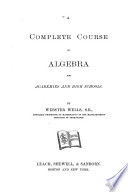 | Webster Wells - Algebra - 1885 - 370 pages
...c—d Whence, a + b: a — b = c + d: c — d. 302. In a series of equal ratios, any antecedent is to its consequent, as the sum of all the antecedents is to the sum of all the consequents. Let a: 6 = c: d = e :/. Then, by Art. 293, ad = be, and af= be. Also, a6 = ba. Adding, a(b + d+f) =... | |
 | Webster Wells - Algebra - 1885 - 382 pages
...с— a Whence, a-\-b: a — b = c + d: c — d. 302. In a series of equal ratios, any antecedent is to its consequent, as the sum of all the antecedents is to the sum of all the consequents. Let a:b = c:d = e:f. Then, by Art. 293, ad = &c, and af= be. Also, a& = ba. Adding, a(b + d+f) = b(a... | |
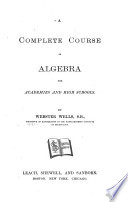 | Webster Wells - 1885 - 368 pages
...by (2), Whence, a + b: a — b = c + d: c — d. 302. In a series of equal ratios, any antecedent is to its consequent, as the sum of all the antecedents is to the sum of all the consequents. Let a:b = c:d = e:f. Then, by Art. 293, ad = bc, and a/= be. Aîso, a6 = ba. Adding, a(b + d+f) = b(a+c... | |
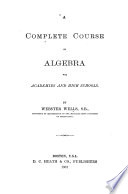 | Webster Wells - Algebra - 1885 - 372 pages
...by (2), Whence, a + b: a — b = c + d: c — d. 302. In a series of equal ratios, any antecedent is to its consequent, as the sum of all the antecedents is to the sum oj all the consequents. Let a:b = c:d = e:f. Then, by Art. 293, ad = be, and af=be. AÎSO, ab = ba.... | |
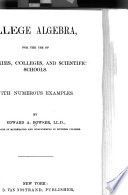 | Edward Albert Bowser - Algebra - 1888 - 868 pages
...••• a»:&»::c-:/«. 6» d" (14) If any number of quantities are in proportion, any antecedent is to its consequent, as the sum of all the antecedents is to the sum of all the consequents. For if a : b : : c : d : : e : f, then by (1), ad = be, and of = be ; also ab = ba. Adding a(6 + d... | |
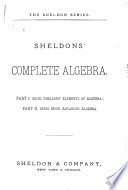 | Algebra - 1888 - 492 pages
...: : с -\- d : с — d. 374. X. Wlien any number of quantities are proportional, any antecedent is to its consequent as the sum of all the antecedents is to the sum of all the consequents. Thus, if a : b : : с : d : : e :f, etc., then а : b : : a -\- с -\- e, etc. : b + d + /, etc. And... | |
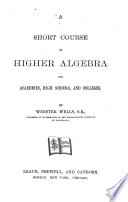 | Webster Wells - Algebra - 1889 - 584 pages
...d Whence, a + b: a — b = c + d:c — d. 318. In a series of equal ratios, any antecedent is to us consequent, as the sum of all the antecedents is to the sum of all the consequents. Let a: b — с: d= e :/. Then by Art. 309, ad = &e, and af= be. Also, ab = ba. Adding, a(b + d+f)=b(a+c... | |
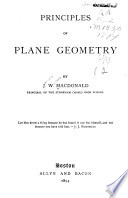 | James Wallace MacDonald - Geometry - 1894 - 76 pages
...powers or like roots are in proportion. Proposition XI. A Theorem. 127. In a series of equal ratios the sum of all the antecedents is to the sum of all the consequents as any one antecedent is to its consequent. COROLLARY. The sura of any number of the antecedents is... | |
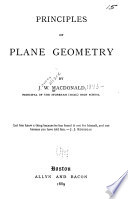 | James Wallace MacDonald - Geometry - 1889 - 80 pages
...consequents. Proposition X. A Theorem. Proposition XI. A Theorem. 127. In a series of equal ratios the sum of all the antecedents is to the sum of all the consequents as any one antecedent is to its consequent. COROLLARY. The sum of any number of the antecedents is... | |
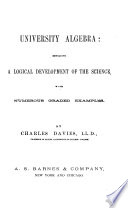 | Charles Davies - Algebra - 1889 - 330 pages
...+ d+f+h+ &c. _ b Ac. a •/ Honce, the following principle : 10. In any continued proportion, tlie sum of all the antecedents is to the sum of all the consequents, as any antecedent is to the corresponding consequent. Let us assume the two equations, bd . fh - =... | |
| |